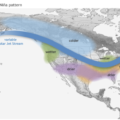What You Need to Know |
Flood waters in homes carry a variety of health hazards since they may contain sewage, mold, bacteria, viruses and other hazardous germs which can cause disease. In addition, safety risks such as electrical shock or electrocution may be present in flooded areas.
All objects and surfaces that come into contact with flood waters should be cleaned, sanitized or discarded. Every effort should be taken to avoid flooded areas in the home until flood waters drain.
What precautions should I take to prepare for cleaning flooded areas in the home?
Keep children, pregnant woman, people with health problems and pets out of the affected area until cleanup has been completed.
Wear rubber gloves, protective clothes (preferably disposable), waders or rubber boots, goggles and cover all open cuts and sores with adhesive bandages.
Be cautious of electrical outlets and gas lines. Have the Utility Service Department shut off the electricity and gas line if possible.
o Do not handle any connected electrical cords or appliances if the current is still on. Get assistance before attempting to disconnect cords or open the fuse box in a flooded basement.
o If electricity is connected to an appliance that has had the motor controls submerged, do not attempt to start it until you have consulted your appliance service company or dealer.
o Use battery-powered flashlights in flooded areas. Never use matches, lighters, or lanterns in an enclosed area where gas could be present. Check all affected pilot lights or burners on gas-fired or oil-fired appliances before placing them back into service.
While a basement is still flooded, avoid flushing toilets or using other plumbing fixtures whose discharge could cause toilet waste to discharge into the basement.
How should I clean areas after flood waters recede?
Drain all flooded basements by natural drainage or by pumping.
Wear rubber boots and waterproof gloves during cleanup.
Wash or flush down walls and floors, if possible, during the drainage or pumping process.
To clean up walls, hard-surfaced floors, cupboards, countertops, refrigerators, etc.:
o Use plenty of soap or dishwashing products.
o Use hot water if possible.
o After thoroughly cleaning areas, disinfect by using eight (8) ounces or 1 cup of household bleach per 5 gallons of water.
o Provide as much ventilation as possible by opening windows and using fans or dehumidifiers if electricity is available during clean-up and when cleaning other enclosed areas.
o Discard all bottled goods sealed with crimped caps that were in the flood. Destroy the contents to make certain that no one else will use such bottled goods.
The Oakland County Health Division will not deny participation in its programs based on race, sex, religion, national origin, age or disability. State and federal eligibility requirements apply for certain programs. I:\Health\Admin\Materials Center\CHPIS_Fact_Sheets\fs_safe_cleaning_flood.doc rev 8-2014
Discard clothing, carpets, upholstered furniture, toys, bedding, and similar items unless they are cleaned and disinfected. Wash all linens and clothing in hot water and detergent or dry clean them. Discarded clothing should not be left accessible to unauthorized scavengers pending pickup.
Movable objects should be put outdoors to air dry in the sun. Then spray them thoroughly with a disinfectant. Some salvage agencies or companies are equipped to process contaminated material without hazard to employees or eventual customer.
After completing clean up:
Make sure that all clothing worn and exposed areas of the body are thoroughly washed. Clothes, linens and cleaning rags should be washed separately from uncontaminated items.
Prevent tracking of sewage into the living quarters of the house.
Wash your hands with soap and warm water. Use water that has been boiled for 1 minute (allow the water to cool before washing your hands).
For more information about flood precautions visit: www.oakgov.com/health







